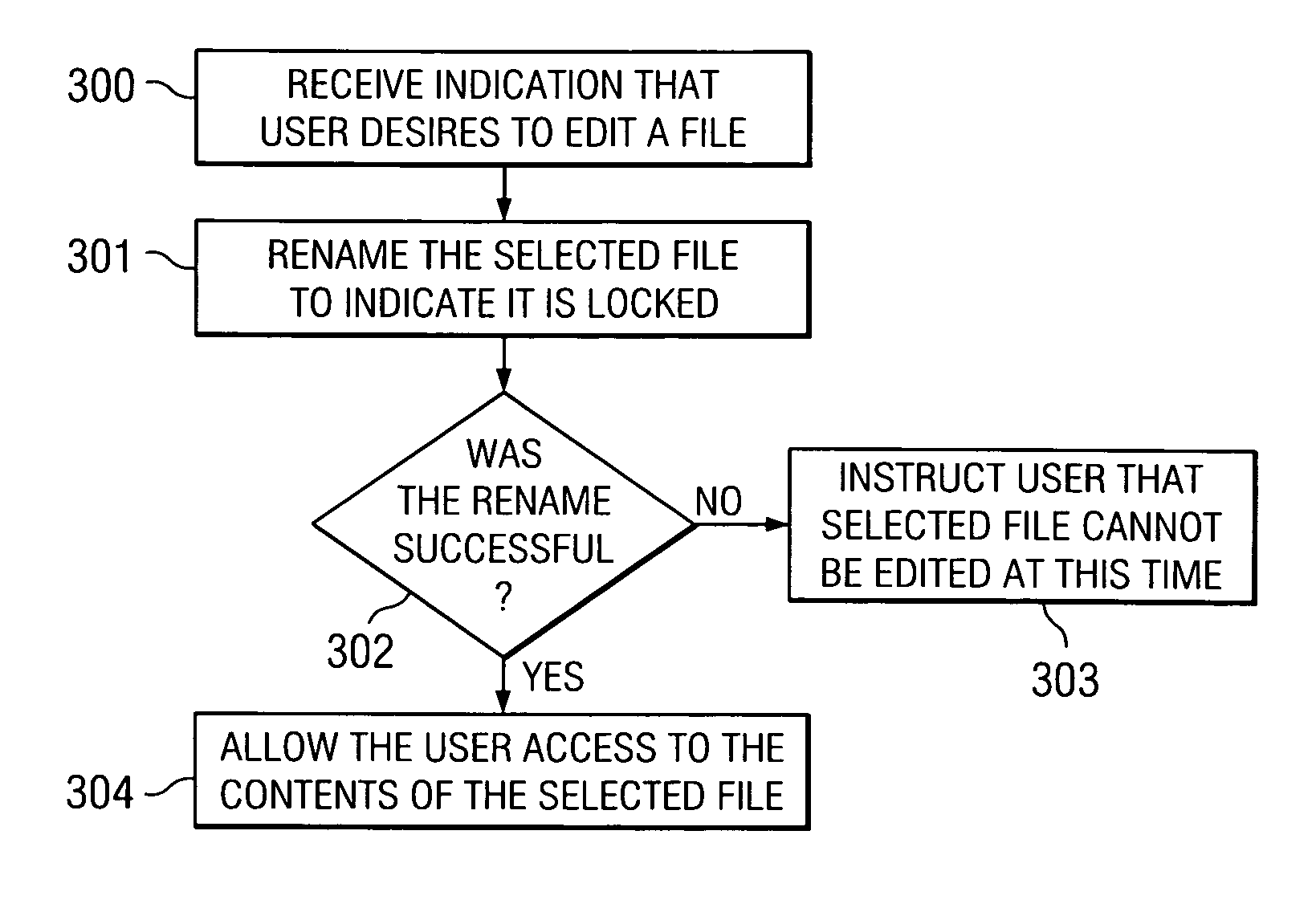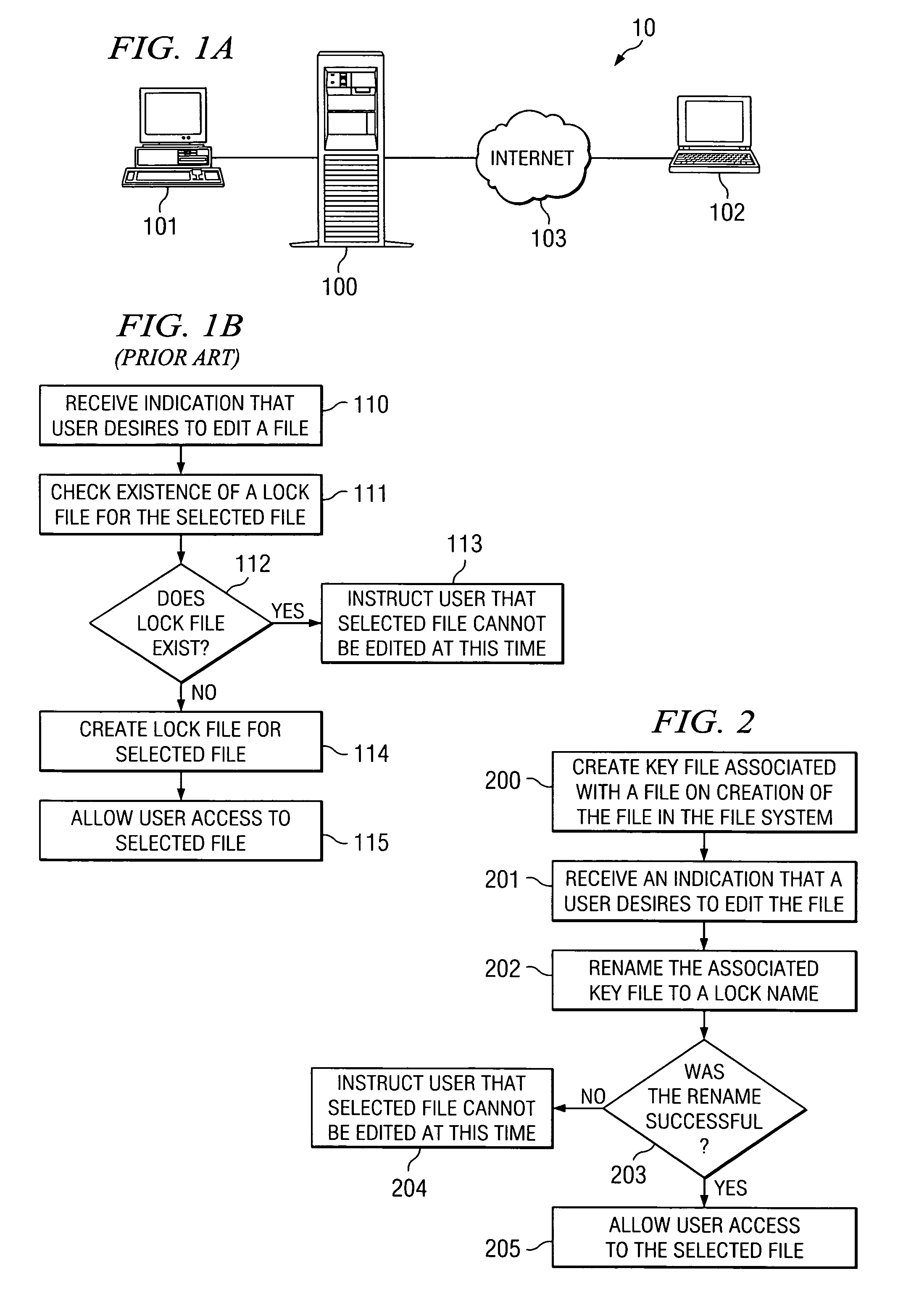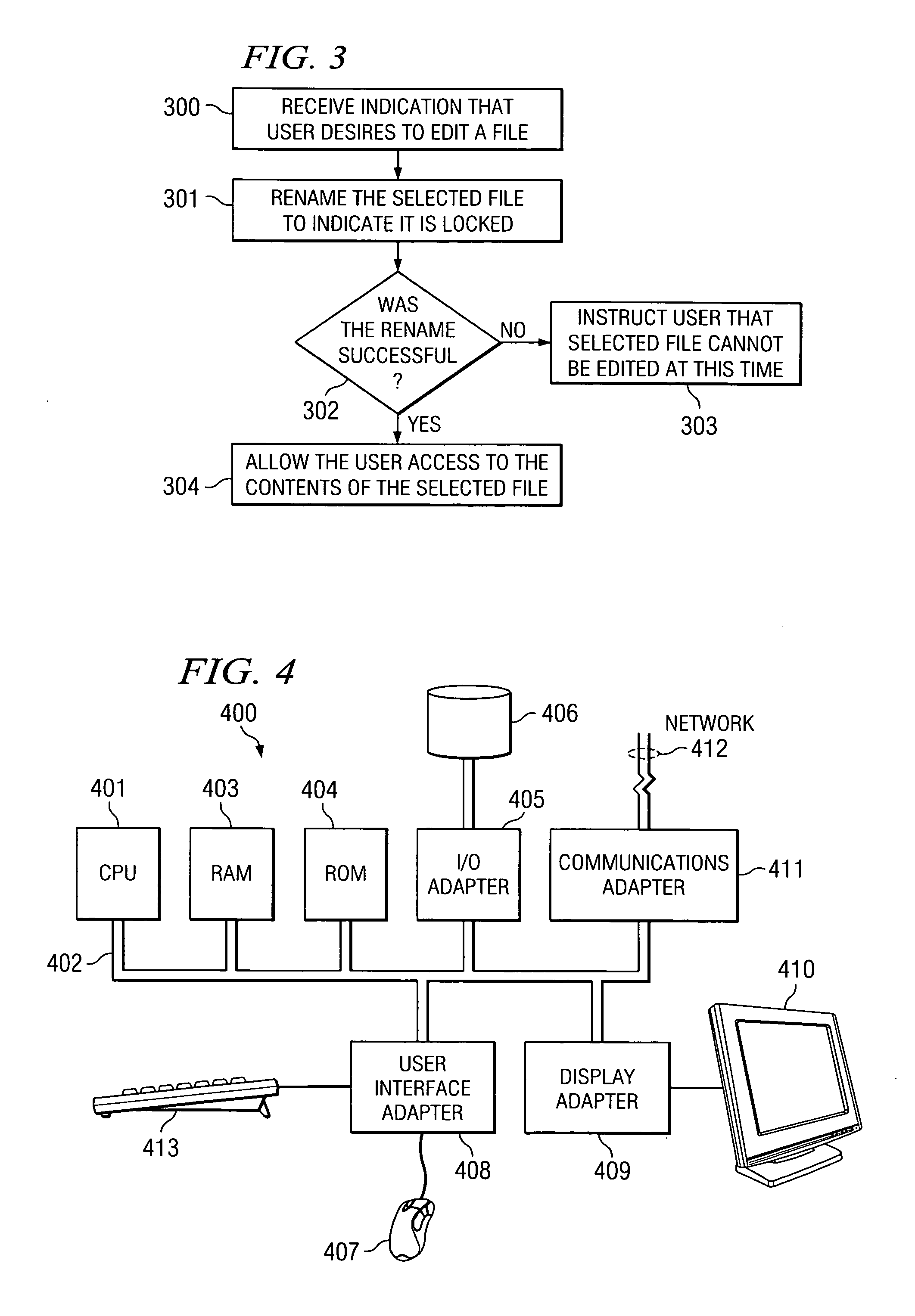File system atomic lock
- Summary
- Abstract
- Description
- Claims
- Application Information
AI Technical Summary
Benefits of technology
Problems solved by technology
Method used
Image
Examples
Embodiment Construction
[0015]Remote filing systems, such as FTP and SFTP, typically have simple sets of operations, such as EXISTS, GET, PUT, MOVE, DELETE, RENAME, and the like. Each of these operations may be atomic, but only some of them are accurate, meaning that some of these operations may return an error. For example, a RENAME, GET, MOVE, or DELETE command issued for a file that does not exist will typically return an error. Locking mechanisms have been developed in various development environments, such as MACROMEDIA INC.'s DREAMWEAVER™, to operate with the limitations of such existing file systems. In previous versions of DREAMWEAVER™, which is a Web page development environment or tool, users may work in teams developing the target Web site or page and, thus, be working on the same document. Locking, in such a collaborative environment, is advisable to prevent inadvertently overwriting or deleting another developer's work.
[0016]FIG. 1A is a block diagram illustrating file system 10. File system 1...
PUM
 Login to View More
Login to View More Abstract
Description
Claims
Application Information
 Login to View More
Login to View More - R&D
- Intellectual Property
- Life Sciences
- Materials
- Tech Scout
- Unparalleled Data Quality
- Higher Quality Content
- 60% Fewer Hallucinations
Browse by: Latest US Patents, China's latest patents, Technical Efficacy Thesaurus, Application Domain, Technology Topic, Popular Technical Reports.
© 2025 PatSnap. All rights reserved.Legal|Privacy policy|Modern Slavery Act Transparency Statement|Sitemap|About US| Contact US: help@patsnap.com



